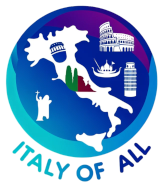The province of Ferrara, located in the northern Italian region of Emilia-Romagna, offers a unique blend of natural beauty, rich history, and cultural depth. Known for its striking Renaissance architecture and a landscape that includes both the Po Delta and vast agricultural lands, Ferrara is a captivating mix of the past and present.
Geographically, Ferrara is characterized by its flat, expansive plains and the Po River, which plays a central role in the region’s agriculture and ecology. The province extends into the Po Delta, a UNESCO World Heritage site noted for its biodiversity and unique landscapes. This area is a haven for wildlife enthusiasts and nature lovers, offering numerous opportunities for bird watching, cycling, and exploring the numerous waterways.
Historically, Ferrara was a significant cultural and political center during the Renaissance under the rule of the Este family. The Este’s influence is evident in the city’s urban layout and architecture, including the imposing Castello Estense, the Palazzo dei Diamanti, and the Cathedral of Ferrara. The city’s historical center retains much of its original walls and streets, providing a well-preserved snapshot of Renaissance urban design.
Culturally, Ferrara has maintained a vibrant arts scene, historically celebrated as a center for writers, artists, and musicians. It hosts various festivals and events throughout the year, including the Ferrara Balloons Festival, one of Europe’s most significant hot air balloon festivals, and the Ferrara Buskers Festival, an international street musicians festival. The province also has a rich tradition in literature and was home to notable Renaissance figures such as the poet Ludovico Ariosto.
Cuisine in Ferrara reflects the agricultural productivity of the region and its historical connections. Local specialties include “cappellacci di zucca” (stuffed pasta with pumpkin filling), which reflects the area’s rich produce, and “salamina da sugo,” a traditional pork sausage that is slow-cooked and served over polenta. The region also takes pride in its bread, especially the “coppia ferrarese,” a twisted bread that has Protected Geographical Indication status.
Economically, Ferrara’s economy is diverse, with strengths in agriculture, industry, and services. The agricultural sector benefits from the fertile lands of the Po Valley, producing cereals, fruits, vegetables, and important exports like wheat and sugar beets. Industrial activity includes chemical, engineering, and biomedical sectors. Tourism also plays a vital role, driven by the province’s rich historical and cultural assets and natural beauty.
Despite challenges like economic diversification and environmental concerns, especially related to the conservation of the Po Delta, Ferrara is focused on sustainable growth. Efforts are being made to promote eco-tourism and to preserve the historical and natural heritage that defines the region.
Overall, the province of Ferrara offers a compelling mix of natural landscapes, historical richness, and vibrant culture. Its commitment to preserving its unique heritage while fostering economic and environmental sustainability ensures a dynamic and promising future.
Comuni in Ferrara Province:
